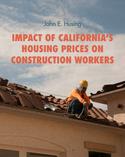The current frenzy of new IPOs — Uber, Lyft, Slack, Postmates, Pinterest and Airbnb — seems destined to reinforce progressive notions that California represents the future not just for the state, but the nation. It will certainly reinforce California’s fiscal dependency on tech-dominated elites — half of the state’s income taxes come from people making over $500,000 a year — and provide a huge potential multi-billion dollar windfall for the state treasury. read more »
California
Killing the California Dream
Californians need to give up on their dream of a “ranch-house lifestyle” and an “ample backyard” and the state should become “more like New York City,” writes LA Times columnist George Skelton (reprinted in the Mercury-News and East Bay Times in case you run into the LA Times paywall). After reading his article, the Antiplanner has just one question: Why? read more »
- Login to post comments
California’s Self-Created Future Energy Crisis
In much of the country a powerful energy boom is providing a serious stimulus to economic growth. But in California, where fossil fuels are considered about as toxic as tobacco, we are lurching toward an anticipated energy shortage that will further exacerbate the state’s already deep geographic and class divisions. read more »
- Login to post comments
The Captain Hindsight Award
A reader recently made a comment I took seriously:
“I am certainly not here to try and refute much of what you have brought to light, only to suggest that your comments are not in the least bit constructive on the whole. That is why I have decided to pin you with the prestigious “Captain Hindsight” award.”
This post is my response. read more »
- Login to post comments
California Using Band-Aids for Homeless Wounds
The problem with the California economy is not greenness. It’s homelessness. Get these people off our streets first. Make living like a human being affordable again. If there is no incentive to work, why work.
Every year there are over 2,500+ new bills expected to fill the annual calendar of the 80 Assemblymen and 40 Senators of the California State legislature. Fortunately, most never make it to the Governor for signature. read more »
- Login to post comments
Impact of California's Housing Prices on Construction Workers
This report takes a close look at the impact of California’s very high residential prices on the ability of construction workers — the very people who build our homes — to afford to live within the markets where they are work.
It does so by reviewing the number of workers and pay scales in 50 different construction occupations. It distinguishes between pay levels for all construction workers and those who are in unions. The research separately studies Southern California and the San Francisco (SF) Bay Area since real estate markets are subject to very different forces depending upon their geographic location. read more »
- Login to post comments
San Bernardino Slams Brakes On Big Solar
The San Bernardino County’s Board of Supervisors slammed the brakes on big solar projects and highlighted a challenge California could face if it seeks to eliminate the use of fossil fuels. read more »
- Login to post comments
Los Angeles Rail: Ridership Decline Estimated at 42 Percent
The Reason Foundation has just published an important review of transit in Los Angeles County, by transportation consultant Thomas A. Rubin and University of Southern California Professor James E. Moore II. A total of four reports have been released, under the title A Critical Review of Los Angeles Metro’s 28 by 2028 Plan. Links are provided at the end of this article. More reports are to follow. read more »
- Login to post comments
California's Message: You Built That, Now Get Out!
The people who build our homes increasingly can no longer afford them. As the state elite and their academic cheering crew celebrate our progressive boom, even the most skilled, unionized construction workers, notes an upcoming study, cannot afford to live anywhere close to the state’s major job centers. read more »
- Login to post comments
The State of Jefferson
Last year a neighbor began flying a State of Jefferson flag on the side of his house that faces mine. I had no idea what it represented, so I looked it up. Short version: the 23 rural northern counties of California want to break away from the rest of the state so they can do their own thing. read more »





















